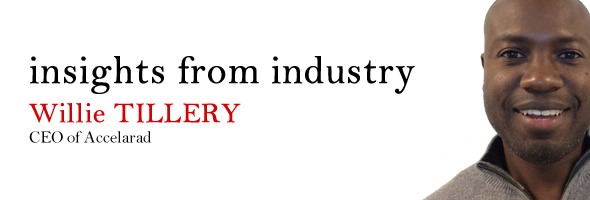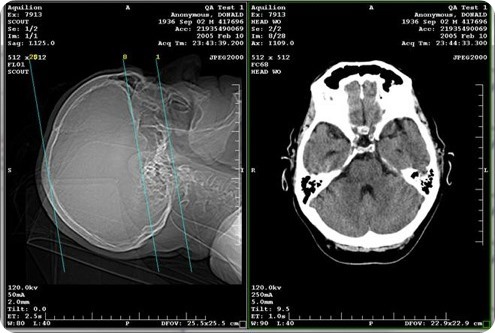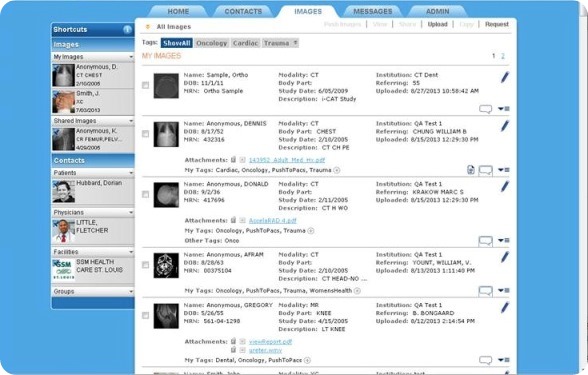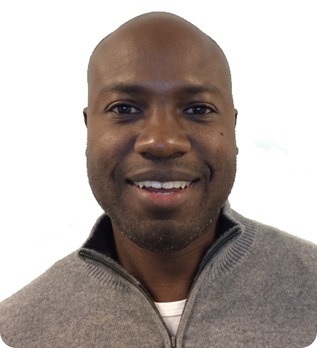
When did cloud-based medical image exchanges first become available?
Accelarad’s team first recognized the need for the virtualization of radiology more than 10 years ago. Over the past six years, the industry has readily adopted cloud-based medical image exchanges, as evidenced by the thousands of physicians who share nearly half a billion images via Accelarad each year.
With anything in health care, it takes a while to change practice, and we expect the wholesale change to cloud-based image sharing could take up to 10 years to complete, much like the switch from film to digital and PACS.
How were medical images previously shared? What were the disadvantages of these methods?
The most common method of image sharing over the past decade has been compact discs (CDs). Physicians place exams and reports on CDs and give them to patients to take to their medical appointments for treatment or second opinions; however approximately 20 percent of these CDs contain corrupt or bad files.
Frequent loss is another CD problem, particularly for critically ill patients being transported in ambulances with small discs tucked into their personal belongings.
When a CD is unreadable or lost, a patient is usually re-scanned, which exposes the individual to added radiation and delays treatment. In fact, there are more than 600 million exams done each year in the U.S. and 10 to 20 percent of those are duplicate exams - totaling $10 billion in excess.

What are the benefits of doctors being able to share medical images with patients instantly?
Collaborative platforms are decreasing healthcare costs and empowering care coordination by allowing hospitals, doctors and patients to access and share medical images in real-time from Internet-connected devices.
Medical image sharing helps streamline transfer and referral processes, eliminate duplicate testing and improve patient outcomes and care coordination.
In addition, cloud-based medical imaging solutions mean there is no hardware or software to install and maintain.
Accelarad’s customers also value our medical image exchange in trauma cases. In the ER, physicians now have a patient’s medical images before he/she arrives at the facility, which improves the throughput of patient care.
Hospital personnel can have the patient’s room, operating room and medical staff fully prepared to treat the patient before the ambulance even arrives, which makes a life-saving difference.
Can the image sharing solution also be used by patients to send images to their doctors?
Absolutely. In fact, physicians and patients can invite each other to join the Accelarad network and immediately begin sharing images.
Accelarad’s app allows patients to securely send their physician a picture of a skin lesion or other symptom instead of trying to describe it over the phone – allowing for remote diagnosis and quicker treatment.
Patients are also empowered by this technology because it enables them to store and share their own images through a social networking-like app that is fully HIPPA-compliant.

What are the main hurdles Accelarad faced in creating a secure image exchange and how were these overcome?
At Accelarad, we fully and completely comply with all HIPAA and HITECH rules and regulations. Our security layers start with a detailed Service Agreement and Business Associate Agreement (BAA) that safeguard Protected Health Information (PHI) from unauthorized disclosure or misuse. These agreements also help users comply with HIPAA obligations.
Our system is fortified by sophisticated firewall architecture, data encryption, rigorous member verification and strict user authentication—protecting against loss, unauthorized use or compromise.
Moreover, unlike most medical imaging solutions, our platform has an advanced, secure communication network already built into the infrastructure, eliminating the need for Virtual Private Networks (VPNs).
What excites you most about the potential of cloud-based medical image exchanges?
According to Accenture, about 15 percent of healthcare systems were using cloud storage for medical images by early 2013 and that number is expected to grow to more than 50 percent in the next three years.
This rapid market adoption will cut waste in our healthcare system by eliminating the need for patient rescans and reducing our industry’s reliance on hardware.
In addition, collaborative image sharing will empower and inform more patients to take an active role in their healthcare. Most importantly, I know image exchanges will save thousands of lives, particular in trauma and cardiac scenarios, where time and information are paramount.
What are Accelarad’s plans for the future?
In October, Accelarad launched our Connect America initiative, which we will continue to roll out in regions across the country in 2014. By partnering with “anchors,” or large providers, in cities from Seattle to Raleigh, we are creating regional hubs which link hospitals, physician practices and imaging centers to ensure easy access to patient images and improved care.
Connect America is more than just local image sharing – it’s a virtualized radiology movement that will spur the adoption of cloud-based medical imaging and have positive impacts on patient care nationwide.
Where can readers find more information?
Physicians, hospitals and patients can all find more information about our company by visiting accelarad.com, following us on Twitter and LinkedIn and downloading the Accelarad app from the Apple App store.
In addition, readers can see how our nationwide network is growing by visiting our Connect America website and following @_ConnectAmerica on Twitter.
About Willie Tillery
 Willie Tillery co-founded Accelarad in 1999 while earning his Masters of Science in electrical engineering at the Georgia Institute of Technology. At the time, he recognized an opportunity for virtualization in radiology.
Willie Tillery co-founded Accelarad in 1999 while earning his Masters of Science in electrical engineering at the Georgia Institute of Technology. At the time, he recognized an opportunity for virtualization in radiology.
Due to his vision and leadership, today Accelarad’s network covers more than 1,650 facilities and hosts the exchange of over 400 million medical images annually.
Currently, Willie provides direction for all strategic and operational aspects of the company. His recent focus is centered on building relationships with strategic partners and securing the funds to ensure strong future growth.